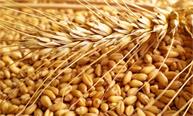1. Any change in the rate of seeding will influence the yield.
2. These varieties of rye yield more under the climatic conditions of our region.
3. The amount of farm produce should he increased.
4. The farm we have just visited produces mostly cereals, while the produce of the neighbouring farm is vegetables.
5. Biennial plants produce seeds only the second year.
6. The root branches of this plant may penetrate to the depth of 30 feet or more, depending on the soil.
7. The root of this plant branches in all directions.
8. Water these plants abundantly and you will get the same results as we did.
9. In our country irrigation requires lots of water.
2. Translate the following sentences paying attention to Infinitive constructions.
1. We expect this method to give the best results in growing sugar beets.
2. Many factors are important for this crop to give the highest yield.
3. Wheat seems to yield more when it is preceded by a soil improving crop.
4. The agronomist considers this soil to have been plowed deep enough.
5. For this soil to be more fertile one should apply manure.
6. Large farms are known to have greater advantage in the use of machinery.
3. Find in text A :
1. Complex Subject (para. 2,4,5);
2. Complex Object (para. 3);
3. Construction corresponding to the Russian expression "чем .... тем" (para. 4);
4. the Infinitive as Attribute (para. 4).
Vocabulary Focus

| Handwrite the words and word combinations related to text A and give their Russian equivalents. Check them in the agronomy and soil science dictionaries. |

| to drain, free of weeds, prompt, to prevail, to secure, to conserve, to take into consideration, a drill, advantage, row, means, by means of, direct combining. |
4. Read aloud and translate text A.
TEXT А
Wheat (part II)

Wheat is best adapted to fertile medium or heavy textured soils1 that are well drained. Silt and clay loams generally produce the highest wheat yields, but it does not mean, that wheat cannot be grown successfully on either clay soils or fine sandy loams.
Wheat grows best when it is sown in a well-prepared, firm, mellow seedbed that is relatively free of weeds2. Sufficient moisture should be present to insure prompt germination and a good growth of the young plants. The time and method of seedbed preparation is determined largely by the prevailing moisture conditions, the crop that wheat follows in the rotation and whether wheat is to be sown in spring or fall. Early plowing is an essential factor in securing more grain per hectare. An early prepared soil is known to conserve moisture much better than the one prepared late.
We know a relatively, shallow seeding of 1 to 1.5 inches to produce good stands in areas and in years when sufficient moisture is available at seeding time. Seed sown in dry soil should be drilled from 2 to 3 inches deep.
The rate of seeding wheat is considered to be a very complicated problem. One must take into consideration' climate and soil conditions, the time of seeding wheat, the quality and germinating power of seed to be sown, the method of sowing to be applied, etc. The seeding rate both for winter and spring varieties ranges from 3 to 10 pecks per acre, depending on the factors mentioned above. In general, the lower the rainfall, the lower will be the optimum rate of seeding.
Most of the wheat grown is sown with a drill. Broad-cast seeding, the oldest and simplest method, is used in regions where modern practices have not been introduced. Sowing with a drill is believed to have important advantages over the broadcast method. The rate and depth of sowing and the distribution of the seed are more accurate and uniform, and less seed is required. Better stands, more uniform maturity and higher yields are thus obtained. The modern drill sows seeds in rows at the required rate and depth and also covers them.
Practically all wheat grow n is harvested by means of combining. In general, wheat is probably better adapted to direct combining than any of the other small grains. It is highly important to harvest wheat at the time that will insure the greatest yield of high quality. Wheat is considered to be ready for combine harvesting when the moisture content of the grain is 14 per cent or less.
Notes to the text
1. heavy-textured soil - почва с тяжелым механическим составом;
2. free of weeds - без сорняков;
3. to take into consideration - принимать во внимание.
 REMEMBER
REMEMBER

 |

Listening and Speaking Focus
Watch the video, answer the following questions:
1. https://youtu.be/OoIy2TUS2oo








